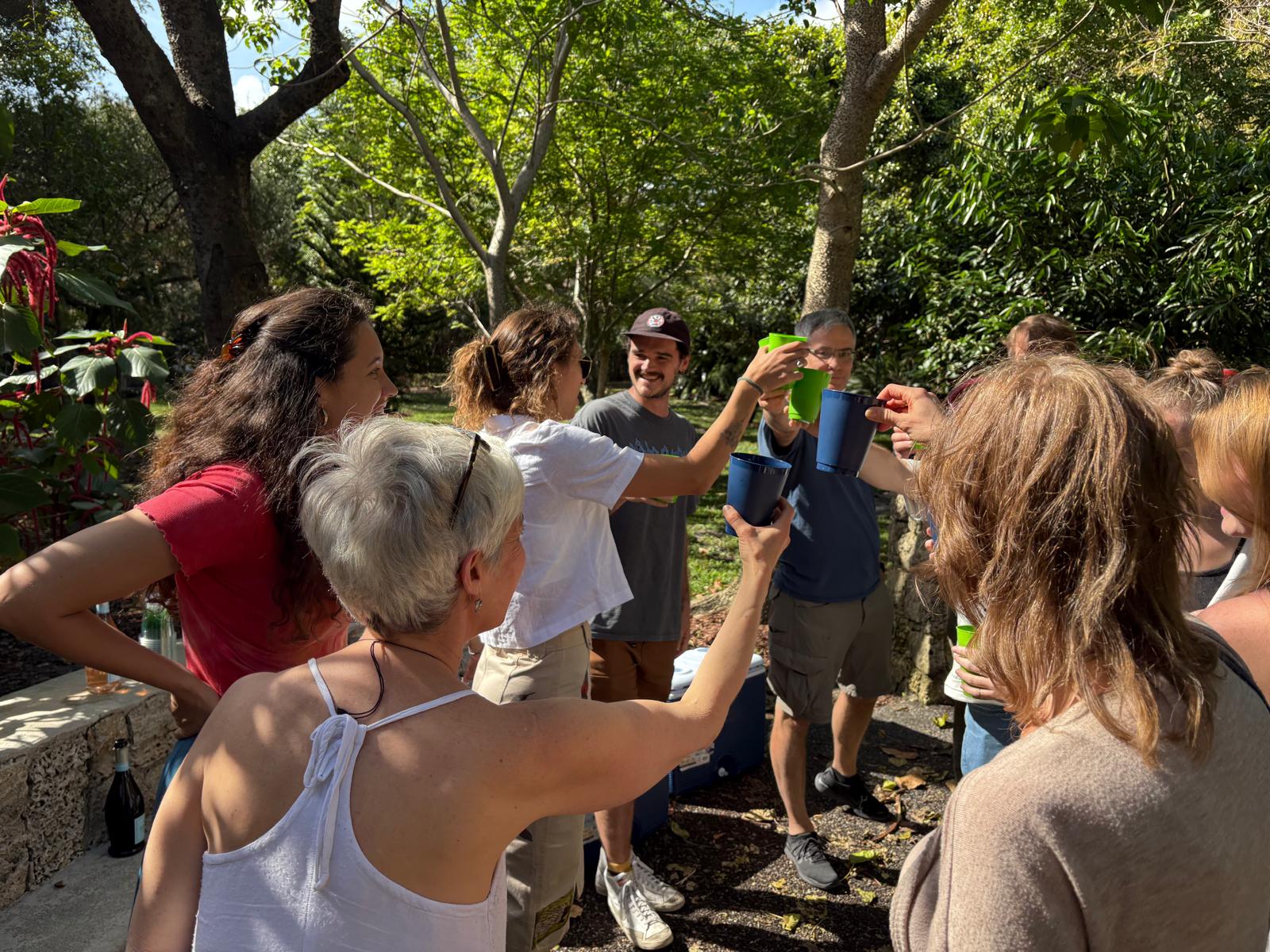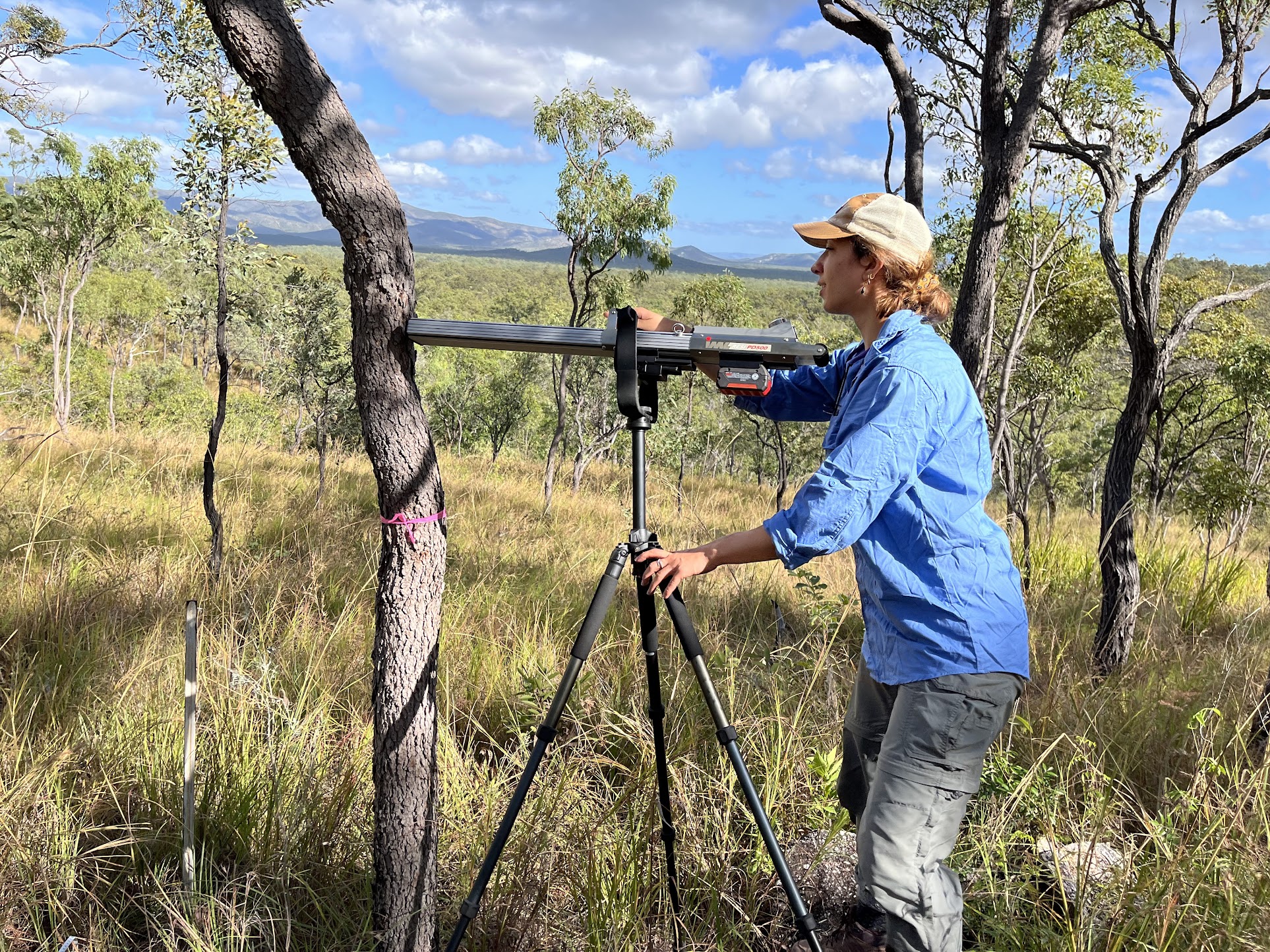New publication: who is eating the inside of trees in the Australian savanna?
Written on December 20th, 2024 by Abbey Yatsko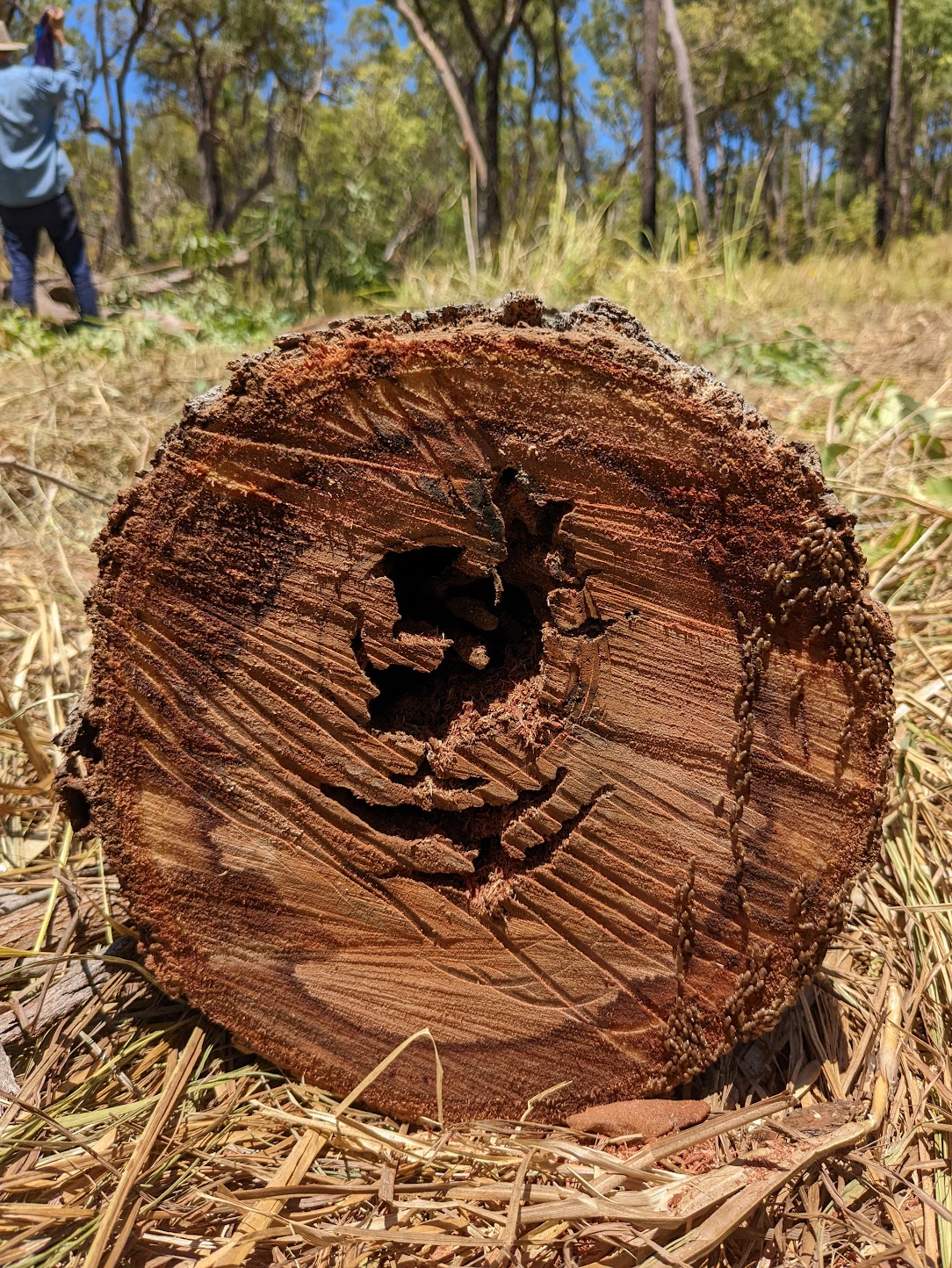
Following previous work in the Iron Range of far North Queensland, Australia, we recently published a paper exploring the decomposers that contribute to wood decomposition occurring within live trees. We leveraged the data from our previous destructive harvest study (read it here!) to determine the relative roles of microbes and termites in the internal tree damage process. Now, you can read all about our new findings published in Functional Ecology, or have a listen to the podcast that I did with the British Ecological Society which tells the story of this study and our results.
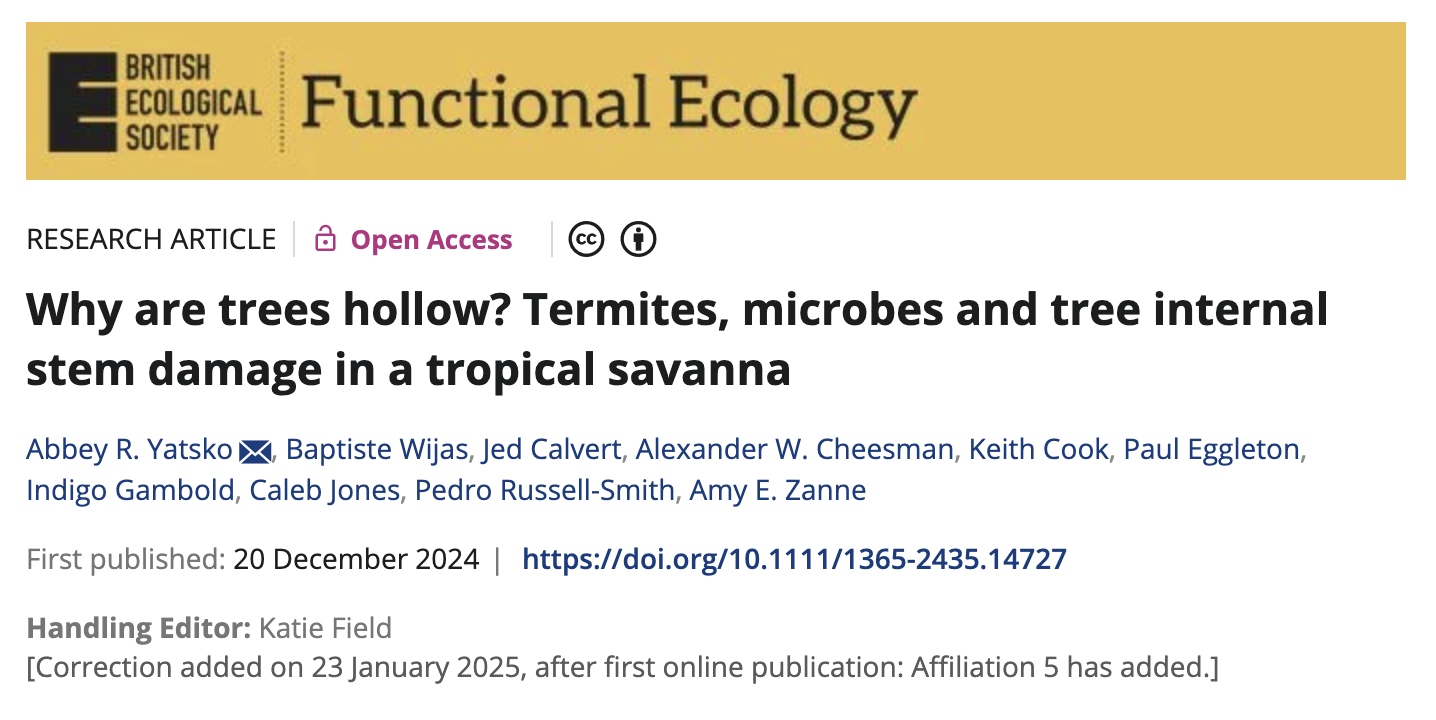
To do this, we took cross section samples from different positions in the tree and attributed internal damage to microbial or termite decomposers. Then, for each decomposer, we could examine how the amount of damage changed for different positions in the tree, as well as total tree-level damaged biomass. Also, we wanted to know if termites and microbes decomposed wood in the same part of the tree – are they dining next to one another, or remaining separate?
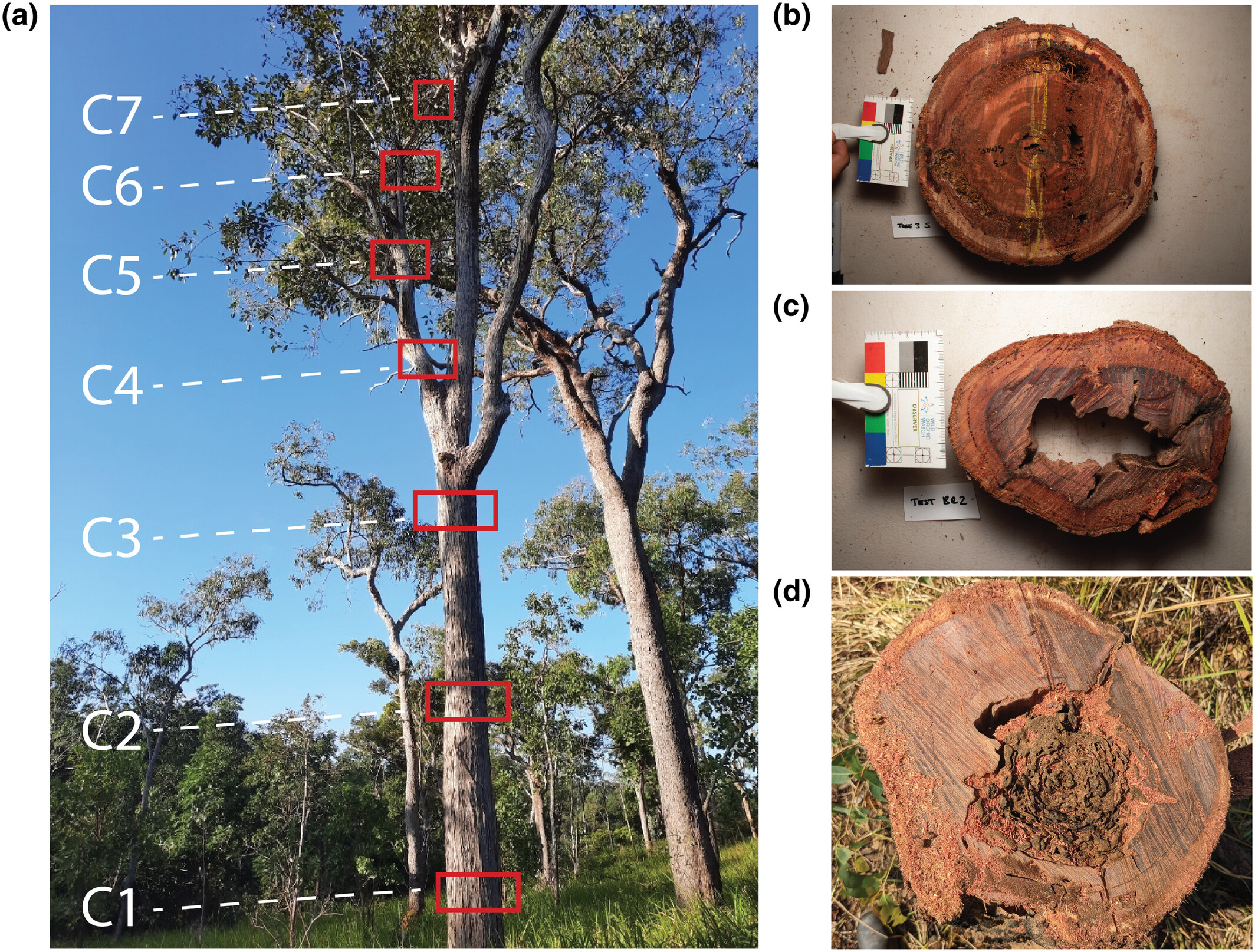 A snapshot of our sampling design. Panel b) gives you an idea of what microbial damage looks like, and panel c) and d) depict termite internal stem damage.
A snapshot of our sampling design. Panel b) gives you an idea of what microbial damage looks like, and panel c) and d) depict termite internal stem damage.
We found that internal damage, from both termites and microbes, was greatest at the bottom of the tree, and decreased into the crown. Termites and microbes decayed wood in the same tree but were keeping distance from one another – it was not so common to find termite and microbially-damaged wood right next to one another.
Also, tree species differed in the amount of termite and microbe damage – one tree species, Corymbia clarksoniana, seemed to be quite tasty from the termite perspective.
Overall, we showed that together termites and microbes were decomposing about 350 kilograms of wood per hectare inside of trees, and this is about half of the estimated downed deadwood stock of savanna ecosystems of the region. But, wood decomposition from internal stem damage is going unaccounted for in carbon cycling models, so this is certainly an area for model improvement!
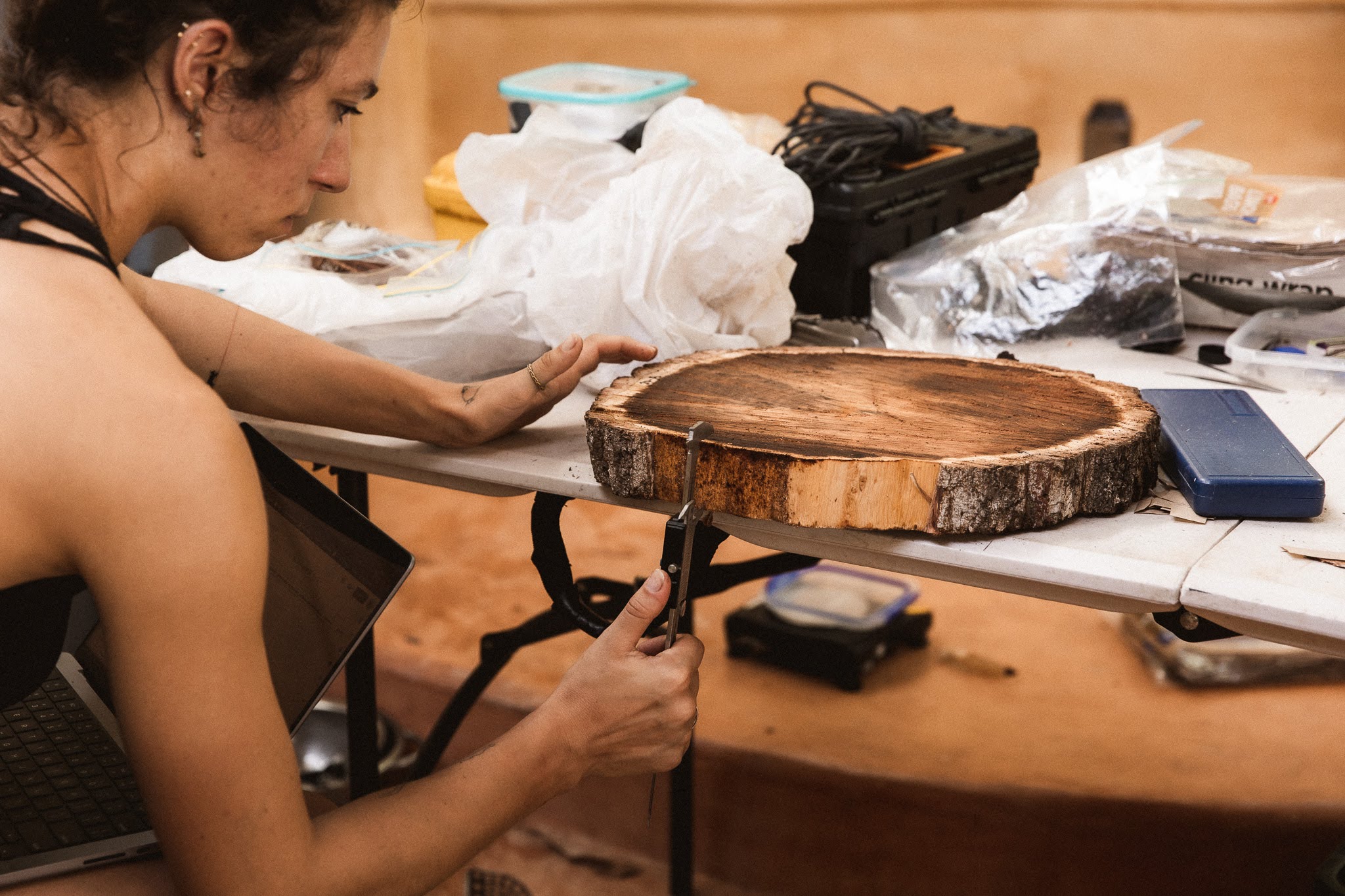 Making measurements of our cross section samples!
Making measurements of our cross section samples!
As the second chapter of my Ph.D., I am very happy to have this study out in Functional Ecology. Paired with our other paper in Methods in Ecology and Evolution, we are able to comprehensively understand the biology of internal stem damage as well as how it impacts forest biomass measurement.
